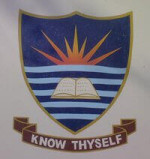

In preparation for the Poetry Essay and by completing your textbook readings, you will be equipped to objectively respond by compiling information from a variety of sources to compose a paper that allows you to write a persuasive analysis of a literary work; follow standard usage in English grammar and sentence structure; identify the theme and structure of each literary selection as well as the significant characteristics or elements of each genre studied; and evaluate the literary merit of a work (Syllabus MLOs: A, B, C, D, F, G and Module/Week 5 LOs: 1, 2, 3, 4, 5, 6, 7).
In Module/Week 5, you will write a 750-word (3–4 pages) essay that analyzes 1 poem from the Poetry Unit. Before you begin writing the essay, carefully read the guidelines for developing your paper topic that are given below. Review the Poetry Essay Grading Rubric to see how your submission will be graded. Gather all of your information, plan the direction of your essay, and organize your ideas by developing a 1-page thesis statement and outline for your essay as you did for your Fiction Essay. Format the thesis statement and the outline in a single Microsoft Word document using current MLA, APA, or Turabian style (whichever corresponds to your degree program). You are required to submit the thesis and outline by 11:59 p.m. (ET) on Monday of Module/Week 4 for instructor feedback.
The Poetry Essay is due by 11:59 p.m. (ET) on Monday of Module/Week 5 and must include, a title page (see the General Writing Requirements), a thesis/outline page, and the essay itself followed by a works cited/references/bibliography page of any primary and/or secondary texts cited in the essay.
Guidelines for Developing Your Paper Topic
Chapter 41 of the Kennedy and Gioia textbook (Chapter 43, pp. 1132–1142 in the eText) provides some helpful pointers for reading poems, taking notes, brainstorming, developing a clearly-defined thesis statement, preparing an outline, writing a cogent literary analysis of a poem, and citing your sources. This chapter specifically addresses Robert Frost’s “Design,” which is studied in this course, so be sure to read it before doing any further work for this assignment. Also, take notice of the example of a poetry thesis and outline on pp. 1344–1345 (pp. 1135–1136 in the eText).
Choose 1 of the poems from the list below to address in your essay:
Consider the following questions for the poem that you have chosen:
NOTE: These questions are a means of getting your thoughts in order when you are collecting information for your essay. You do not need to include the answers to all of these questions in your essay; only include those answers that directly support your thesis statement.












No related question exists


